Our inspiration: sunken ships

In the depths of the sea, we find more than just marine life; there are also remains of our history found in sunken ships. This has happened throughout the ages; divers, archaeologists, scientists, and others continue to dive to try to piece together the puzzle that lies beneath the sea. incredible discoveries have helped to better understand our past and our present , also opening new horizons for innovation .
In some wrecks (sunken ships) countless items have been recovered. wine amphorae empty, but also some with wine and even in some have appeared bottles of champagne inside.
These findings inspired Borja Saracho , a to investigate whether it was true that drinks submerged under the sea could evolve differently than those aged on land , in a cellar.
The “Baltic wine”
One of the most notable meetings was in 2010 , when they recovered bottles of champagne from Veuve Clicquot Ponsardin, Heidsieck and Juglar (known as Jacquesson since 1832) from a 19th century wreck sunk in the Baltic Sea. Specifically, 168 bottles of champagne were found, most of which were auctioned for large amounts of money, but A small sample was left in the hands of a team of scientists led by Philippe Jeandet, professor of food biochemistry at the University of Reims (France), saving it to research its history and to carry out a tasting.
Years later, in In 2015 , the research team published the results of their research in the journal Proceedings of the National Academy of Sciences .

At that time, we were already immersed in the study of the evolution of wine at the bottom of the sea, with the aim of LSEB project (Plentzia Underwater Beverage Aging Laboratory) started in 2008, in the Cantabrian Sea , and in the production of underwater wines under the brand Crusoe Treasure . Even so, their results surprised us and showed us that our research was in line with the findings of this renowned team of scientists.
Revealing aromas of the past
According to the University of Reims study, which focused on uncovering our past, the champagne recovered from the seabed was vintage 1839, and was bottled around 1841, the year the ship sank and its underwater storage began until 2010.
The results obtained helped to Learn about the history of champagne marketing in the early 19th century and how this drink was made at that time.
This drink has been under the sea for 170 years. And yet, when tasting one of these bottles just after rescuing them, the champagne was still good and retained characteristics similar to a very, very old champagne.
The research process

Once the bottles were recovered and identified, their modern-day champagne counterparts were found, and their entire production, elaboration, and tasting process were compared with the underwater sample. Archaeochemistry was used to combine multiple analytical tools to characterize the molecular diversity of these wines. had aged in near-perfect conditions at the bottom of the sea . Some of the recovered bottles They lay in a horizontal position , in total darkness (the wreck was located at a depth of about 50 meters), fairly constant temperature (between 2-4ºC) and in low salinity conditions .
Furthermore, it was confirmed that storing these wines under the sea under these conditions makes them broths retain their healthy properties .
On the other hand, it was surprising to find a greater minerality in the submerged samples. Initially, it was thought to be due to the possible ingress of seawater into the bottles, but after numerous analyses, this possibility was ruled out and attributed to the winemaking processes of that time.
The most surprising thing about “Baltic wine” for scientists was the large amount of sugar it contained , ruling out that it was a Champagne a la Russe (a much sweeter type of champagne). However, the question of how winemakers could achieve such high sugar concentrations remains a mystery .
Tasting “Baltic wine”

The most awaited moment, the to know what a champagne of almost 200 years could taste like , which had lying under the sea, without any kind of control , was a pleasant surprise.
Winemakers initially described the uncorked bubbly as “ reduced ,” with “ wet hair notes ” (this characteristic a wine acquires when it spends a long time protected from any source of oxygen) and “ corny ” (it relates to wines in which there has been incomplete malolactic fermentation inside the bottle).
In addition, experts noted a slight tingling on the palate , reminiscent of the bubbles characteristic of this drink. Although the The corks were in good condition , cork is a porous material and after 170 years, the CO2 inside the bottle slowly diffused out of the bottleneck and into the sea.
The most surprising thing
By oxygenating this wine in the glass, the scent became more pleasant, showing aromas of the grilled, spicy, smoky with fruity and floral notes .
This fruity character of the extracted wine samples made this group of scientists think about the good organoleptic preservation of champagne for almost two centuries , which presented them with the question question of whether the marine environment could be a good place for long-term wine storage.
What does this study contribute to Crusoe Treasure?

All these results, obtained at the time, helped us see that we were on the right track. Although the study was aimed more at understanding the history than at determining whether wine evolves differently under the sea, the results reveal some clues we had already observed.
At Crusoe Treasure Winery, We continue to research and produce “ wines treasured at the bottom of the sea ” (our particular method of making underwater wines), having learned a lot during all these years and knowing which parameters are important in this process and what should be controlled.
Still, these kinds of findings help us understand more, not only about our history, but about this new method of making drinks .


